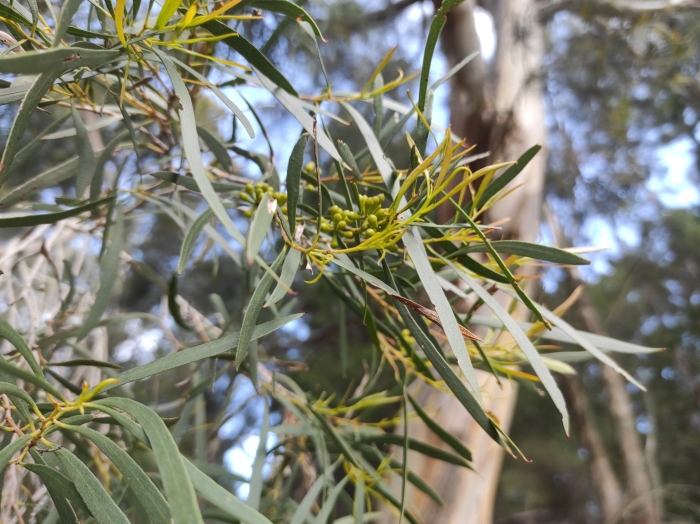White Peppermint
(Eucalyptus pulchella)
White Peppermint (Eucalyptus pulchella)
/
/

Max Tweddell
CC BY 4.0
Image By:
Max Tweddell
Recorded By:
Copyright:
CC BY 4.0
Copyright Notice:
Photo by: Max Tweddell | License Type: CC BY 4.0 | License URL: http://creativecommons.org/licenses/by/4.0/ | Rights Holder: Max Tweddell | Publisher: iNaturalist | Date Created: 2021-08-14T14:45:45-07:00 |























Estimated Native Range
Summary
Eucalyptus pulchella, commonly known as White Peppermint or Narrow-leaved Peppermint, is a small to medium-sized evergreen tree native to dry sclerophyll forests and woodlands in Tasmania. It typically grows up to 66 feet (20 meters) tall and has a distinctive smooth white or pale grey bark that can shed in ribbons. The narrow, lance-shaped leaves emit a peppermint scent when crushed. Flower buds are arranged in groups of nine to twenty, leading to showy white flowers that bloom from November to March, providing nectar for a variety of pollinators.
White Peppermint is valued for its ornamental bark, aromatic foliage, and its ability to attract wildlife. It is used in reforestation projects, as a windbreak, and for its essential oils. In cultivation, it requires well-drained soils, preferably with a north-west facing aspect to mimic its native conditions. It is drought-tolerant once established and thrives in full sun. While generally disease-resistant, it can be susceptible to root rot in poorly drained soils. This species is not typically known for aggressive roots or invasiveness, but it should be planted with care to allow for its full size at maturity.CC BY-SA 4.0
White Peppermint is valued for its ornamental bark, aromatic foliage, and its ability to attract wildlife. It is used in reforestation projects, as a windbreak, and for its essential oils. In cultivation, it requires well-drained soils, preferably with a north-west facing aspect to mimic its native conditions. It is drought-tolerant once established and thrives in full sun. While generally disease-resistant, it can be susceptible to root rot in poorly drained soils. This species is not typically known for aggressive roots or invasiveness, but it should be planted with care to allow for its full size at maturity.CC BY-SA 4.0
Plant Description
- Plant Type: Tree
- Height: 40-50 feet
- Width: 25-40 feet
- Growth Rate: Moderate
- Flower Color: Cream, White
- Flowering Season: Summer
- Leaf Retention: Evergreen
Growth Requirements
- Sun: Full Sun
- Water: Low, Medium
- Drainage: Fast, Medium
Common Uses
Drought Tolerant, Low Maintenance
Natural Habitat
Dry sclerophyll forests and woodlands in Tasmania
Other Names
Common Names: White Peppermint, White Peppermint Eucalyptus, Narrow-Leaf Peppermint, Narrow-Leaved-Peppermint, Whir Peppermint-Gum
Scientific Names: , Eucalyptus pulchella, Eucalyptus amygdalina var. angustifolia, Eucalyptus amygdalina var. angustifolia, Eucalyptus linearis, Eucalyptus linearis, Eucalyptus linearis, Eucalyptus linearis, Eucalyptus linearis, Eucalyptus linearis
GBIF Accepted Name: